A couple of years back, I was gifted a book written by Andy Kessler, “How We Got Here: A Slightly Irreverent History of Technology and Markets”. It’s an entertaining read, informative and thought provoking, regarding the relationship between technology and business. It talks about seemingly different technology inventions, events and applications that have led to the world we know – be it a French teenager building a tax calculator to help his father and starting the journey to the development of memory chips and computers or how an invention by Frenchman Jacquard helped the US Census and contributed to the formation of IBM.
Which made me think about the nature of digital transformation. Digital transformation is not a monolithic solution to transform businesses. Digital transformation is the amalgamation of various technologies to transform every aspect of doing business. It is a layered, interconnected space with technology, business and customers interacting, influencing and evolving with each together. There are many examples of lateral applications of technology.
Let me explain.
Take Blockchain. Invented as a payment system, it is now being applied to land record registries, as one example. Machine Learning was first demonstrated in the game checkers and is now being used to analyze and predict errors in legal documents or in medical diagnosis – to name just two applications.
Each digital technology has its own (technical and commercial) landscape, which can be complex and require careful navigation in terms of choosing the right partner, engagement model, build versus buy decisions, budgets and timelines.
Add to this the business layer and things get even more interesting. Each industry is unique in terms of infrastructure, supply chain, raw materials, labor and skills set requirements, target customers and its own culture.
Consider the below illustration. The basic building blocks of a business model are represented on three axes where 0 indicates completely physical and 1 indicates completely digital. Businesses with unique coordinates indicate the current inherent nature of the business and where it lies on the digital spectrum. The very nature of its business would dictate the degrees of freedom that they enjoy in this space. For example, for a business producing auto spare parts, the input can never be digital. It will always be physical. Its business strategy will be driven and controlled by different factors than a completely digital business.
An organization’s culture also plays a big part in how they respond to and adopt change. I like to broadly classify them as industrial mindset businesses and post-industrial mindset businesses. Companies with an industrial mindset often look at digital transformation from purely an efficiency point of view. Producing the same (work, material, interactions) with less resources (people or otherwise) drives their approach. A post-industrial mindset business looks at digital transformation from a productivity point of view – how to produce more (innovation, work, material, interactions) with given resources. It brings innovation to the center of its strategy.
The third layer of complexity is customers. Today’s customers know what a great customer experience is, and they expect and demand it for every business interaction. This customer expects a B2C level of customer connection and experience in a B2B environment, blurring the traditional boundaries between B2C and B2B sales and marketing approaches.
This layered and connected nature of digital transformation makes it a team sport rather than individual game. Engaging with the right partner helps work through articulating the business problem, breaking it down and then building a solution which creates a truly digital business. A partner who has this experience and brings a lateral thought process to the table through exposure to different technologies and industries helps you connect the right dots in an efficient manner.
At Persistent, our Digital Business Strategy practice helps businesses navigate the interconnected digital transformation landscape with a clear understanding of the connections between the business, the technology and the people.
To learn more visit: Digital Business Strategy.
Find more content about
digital transformation (49) Business Model (1) Digital Business Strategy (1) Connected Model (1) Business Layers (1)







